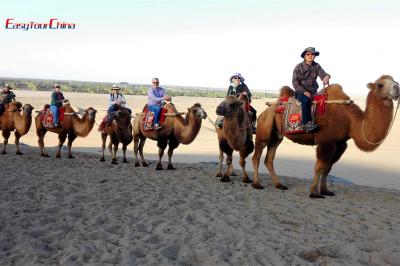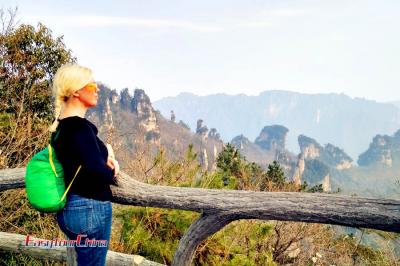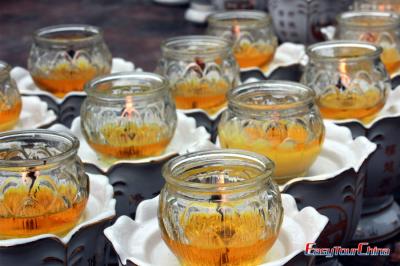Xian Hanyangling Museum (Tomb of Emperor Jingdi)
The Tomb of Emperor Jingdi, today’s Xian Hanyangling Museum, is a joint mausoleum of Liu Qi (188 -141 BC), the fourth emperor of the Western Han Dynasty, and his wife Empress Wang. It is located at Zhanjiawan Village, about 20 kilometers north of Xian City, where Emperor Jingdi of Western Han Dynasty was buried. The Xian Hanyangling Museum was founded based on the Tomb of Emperor Jingdi and its archaeological findings.
Hanyangling Museum Facts
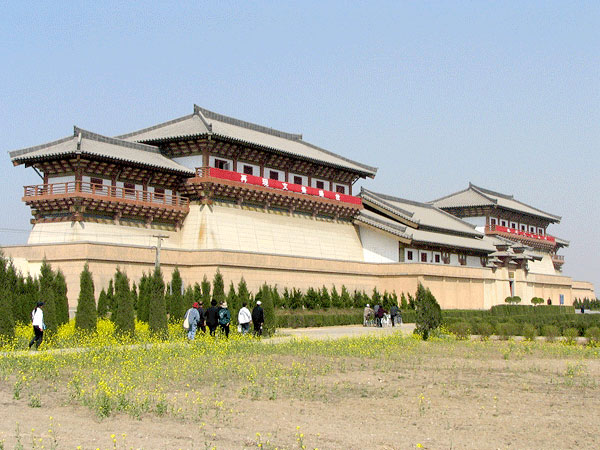
Who is Emperor Jingdi?
During the 17-year reign of Emperor Jingdi, he developed a peaceful relationship with the Huns (nomads to the north of China) through intermarriage, and reduced the burden of tax, corvee and penalty, by which way Han economy developed rapidly after the turmoil at the end of Qin Dynasty. So he is remembered as a capable emperor in Chinese history, together with his father Emperor Wendi, opened a golden era of harmony in the early feudal society, which was later regarded as “the Great Reign of Wen and Jing”.
>> Related reading: Top 6 Greatest Dynasties of China | Top 8 Greatest Chinese Emperors in History
Construction of the Tomb of Emperor Jingdi
The Tomb of Emperor Jingdi or Hanyang Mausoleum consists of the imperial mausoleum, the empress mausoleum, the southern and northern the burial pits, the criminal cemetery, the mausoleum temple and other ceremonial buildings, the companion cemetery and the Yangling City.
The total area of the mausoleum is 20 square meters and the construction time is as long as 28 years from 153 BC to 126 BC. The entire complex is designed in line with the imperial state powers and their predominant hierarchic ranks, taking the Emperor's graveyard as the very center, scattered around it are burial pits, archaeological exhibitions, criminal graveyard and some satellite tombs.
Layout
The imperial tomb faces eastward, situated in the western part of the central area of the mausoleum complex. The Empress's Tomb, the southern auxiliary burial pits, the northern auxiliary burial pits, and Building Site No. 1 are equidistantly distributed at the four corners of the imperial tomb. The consorts' burial area and the Luojing Stone site are located symmetrically on the north and south sides of the imperial tomb. The convict burial ground and three building sites are arranged in a straight line from north to south on the western side of the imperial tomb.
The ancillary burial grounds are arranged in a grid pattern along both sides of the Sima Road east of the imperial tomb. The Yangling City (Yangling Yi) is situated at the eastern end of the complex.
Centered around the imperial tomb, the entire complex features a symmetrical layout with four corners forming an arc, connected east-west and north-south. Its orderly design and rigorous structure reflect ancient China's imperial consciousness of supreme authority and strict hierarchical concepts.
Archaeological Findings and Value
The Mausoleum of Emperor Jingdi was excavated in 1972 which was the beginning of the excavation of Hanyang Mausoleum. In the Western Han Dynasty, the emperor and empress were buried together in the same tomb and different caves.
The size of the Empress Wang’s tomb is the same as that of the Emperor Jingdi’s tomb, with a height of about 25.5 meters, and in an “A-share”, which was the first time in the archaeology of the eleven tombs of the Western Han Dynasty.
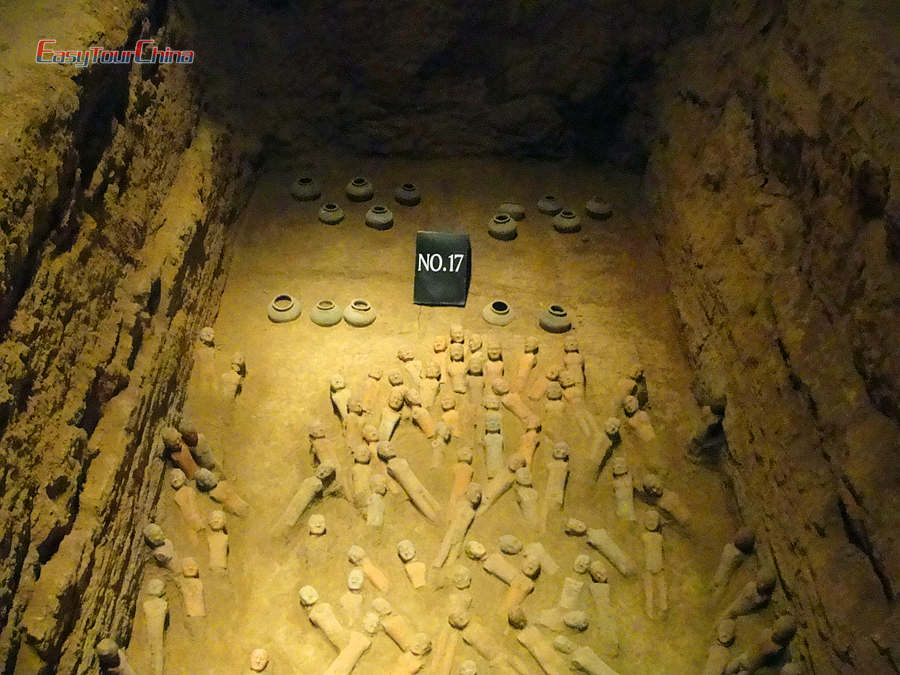
In 1998, archaeologists excavated 10 outer pits on the east side of the mausoleum. A large number of terracotta figures, including officials, warriors, attendants, officials, all kinds of terracotta animals, wooden chariots and horses, living utensils and weapons of various textures, as well as consumer goods such as grain, meat and textiles have been unearthed.
The archaeological findings of the Tomb of Emperor Jingdi reflect a comprehensive display of the Han Dynasty military scene. The tomb is not only the reflection of the Western Han emperors' funeral system, but also the epitome of the economic prosperity, military power and material prosperity in the Western Han Dynasty.
>> Recommended Xian Tours to the Tomb of Emperor Jingdi
>> Related reading: 7 Oldest Archaeological Sites in China
Xian Hanyangling Museum Exhibitions
In 2007, the underground Protection Hall of Xian Hanyangling Museum covering ten burial pits east of the emperor’s tomb mound with an area of 8000 square meters, was opened to public. It has been modernized with heated glass wall and tunnel to separate the relics and visitors into two areas of different temperature and humidity aimed to protect and maintain the relics on a large scale while allowing visitors to view the relics at different angles within a short distance in the mysterious environment. A large amount of colored pottery figurines and other items are displayed here.
The terracotta army consists of a group of women, most of whom are comely and well-proportioned. There are also some with prominent cheekbones and strange features, who should be members of a different ethnic group at the time. Compared with the solemn and vigorous Terracotta Warriors of Emperor Qinshihuang, the terracotta warriors of the Han Dynasty in Yangling are peaceful and calm, reflecting the serene social atmosphere in the “the Great Reign of Wen and Jing”.
At the top of the central section of the site of the Tomb of Emperor Jingdi is a large square stone, known to the local public as a compass stone, which has a positive north-south orientation. It is the earliest measuring stone found in the world.
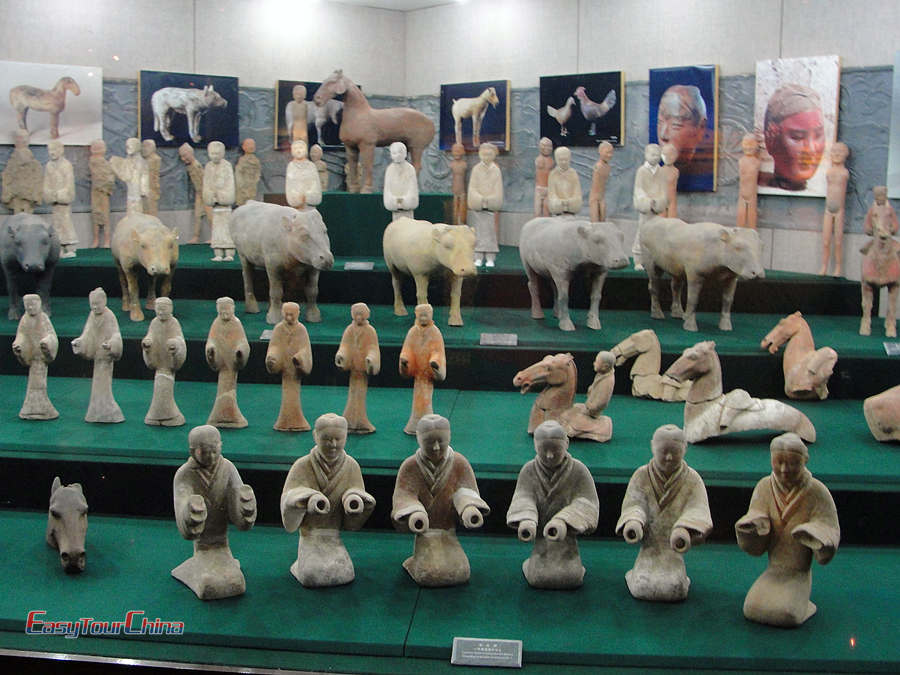
How to Get to Hanyangling Museum
- Xian to Hanyangling Museum: get on the Bus No.10 from Xi an Xin’an hospital. The departure time is from 6:30 to 18:00.
- Xianyang to Hanyangling Museum: take bus No. 5 from Xianyang Railway Station to Hanyangling Museum. Departure time: 8:00 - 18:00.
- Zhangjiapu to Hanyangling Museum: take bus No. 4 to get to the museum directly; Departure time: 8:30-17:00.
Travel Tips
People over 65 years old, people with disabilities, pregnant women and other people with limited mobility can be given priority for inspection and entry under the guidance of security staff.
